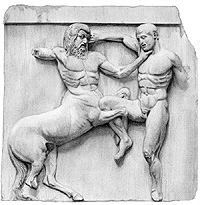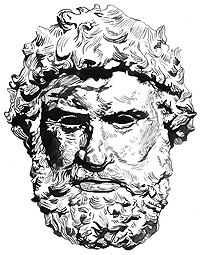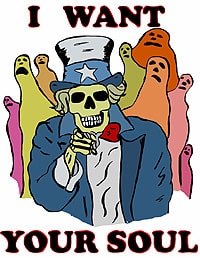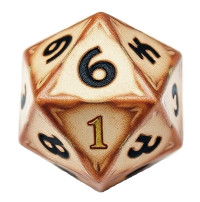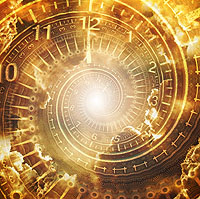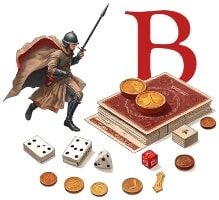"My Precious..."
Sun, Apr 4, 11:55 AM (7 days ago)
Hola Hefe...
...Just read your most recent piece titled "There was not a Man" some synchronicity in what me mind has been pondering in the last days or so...
In the Talmood Adam is said to have been a created as a Golem.
"Like Adam, all golems are created from mud by those close to divinity, but no anthropogenic golem is fully human."
The Golem in some tales was / is (my emphasis) activated through the word and deactivated with a mere removal of one letter of the same word...
A golem is inscribed with Hebrew words in some tales (for example, some versions of Chełm and Prague, as well as in Polish tales and versions of Brothers Grimm), such as the word emet (אמת, "truth" in Hebrew) written on its forehead. The golem could then be deactivated by removing the aleph (א) in emet,[7] thus changing the inscription from "truth" to "death" (met מת, meaning "dead").
________________________
In native traditions it is largely understood that a human being is made. Not born. Hence ceremonies and rites of passage, the precise protection and dissemination of the oral tradition, initiations being paramount in this process...
The word "believe" in it's root etymology means "to love and to hold dear"
One only has to look at the sheer clinging insanity with which people hold and stroke like a stuffed animal their beliefs
Believe also has the word "lie" built right in the middle of it.
In a reality based in manufactured consent through suggestion...one can not think long and hard about this enough...
To love the lie...
from truth to death with just one letter...
Gotta tip yer hat...
Fire
Fire, thank you for this prompt and the reminder to discuss Amerindian parallels.
The mythic quotes below are my adaptations working from three translations:
Note how the city in this case, the civilized space, is described as a mechanistic goddess created by anonymous hands:
"Approach Her Stone Womb, raised by Him, the king smitten by Love.
Traverse the circuitous wall of mighty Uruk, examine its awesome foundations, admire its brickwork—mud transformed by unnamed toilsome hands. "
Do not our cities have certain souls and live a life beyond the sure control, and most certainly the life span, of their creators?
Below Gilgamesh himself is described as a creation:
"Aruru, Mother of Creation, willfully wrought him to be superior to all men—towering and radiant with perfection."
And the Mother makes another hero:
"At the command of Anu of the Sky, Aruru, Mother of Creation closed her eyes and dreamed. She spit in her hands, formed a mold of clay and tossed it into the wild place, where she shaped it in the form of her ideal, and wrought a man, a killer, a striving soul."
Elsewhere in the story Enkidu faces the realm of death and dust—destination of all clay—and Gilgamesh battles magical guardians of animate stone.
These acts remind this reader of the Stonish Giants of Eastern Woodland Indian myth.
Might the Mother Creator be reflected in reverse when in Tolkien's Hobbit, the trolls are turned to stone—taken by Dawn, and in Greek myth with the turning to stone of men by the glare of a female monster—and of course the turning of Lot's wife into a pillar of salt when she unwisely gazes at the death of an evil city?
Mary Shelly, with her story Frankenstein, named a promethean figure in the subtitle, shares the weird stage of the shadow world with the works of other science-fiction authors: Greg Bear in Blood Music, Dick in Do Androids Dream of Electric Sheep, Mervyn Peake in the monstrously peopled effigy attic in Titus Groan, Robert E. Howard in Iron Shadows in the Moon and The Isle of the Black One and many others. As science-fiction writers are not we creating golems maintained by suspension of disbelief, with our readers assisting in their life support? Even Frosty the Snowman, who I cheered for as a little boy and mourned his melting, is a golem of sorts.
It is also in my thoughts that the man-eating Wendigo—the white ape of the woods, being very much a Grendel-type monster in Amerindian myth, is likewise a golem of sorts, perhaps has Grendel was at the hands of his mother. Furthermore, the depiction of God Almighty in Beowulf as weaving on his war loom reflects a northern mythos more effectively symbolized by weaving than pottery. I recall my grandmother Kern saying of one of her many sister's husbands that "He is putty in her hands."
In Maori, Incan, Babylonian, Egyptian and many other traditions the gods made man of clay. I would like to focus there on the fact that man in turn has rendered these creators in stone, marble, wood, baked clay and even wrote his earliest preserved words on tablets of baked clay, or etched them into stone. Greg Bear in Hegira, writes of a vast world created by some great intelligence which shatters the laws of astrophysics, causing an army of exploration to try and circumnavigate it, seeking towering obilisks that have the knowledge of the higher world and the deeper past inscribed on their sides.
Finally, is modern man, are we, here at what traditionalist regard as our nadir where truth has been entirely eclipsed by the lie, and where the technocrats declare us having risen as a collective tower of diversity and righteous erasure of old and evil ways, are we golems?
Our ever-malleable identity at the hands of the media suggest we are rarely baked, but are kept moist and in our sad way rendered watery in our animation; are we kept soft and malleable by our ever-tinkering mind masters?
Are our cities and this internet continuum like the Tower of Babel?
Are the places where we live the real golems, into which stale and often rancid life has been breathed by their creators and we have been injected like so much plasma to maintain these zombie-like spaces breathing like a mad woman in a coma suffering from dreams that shatter her remaining parts, one brick and one tittering soul at a time?
I have often thought that the mechanistic world of man, what we call Civilization, Our Lower World if you like, is a womb and a tomb, a place where souls are dragged into it screaming in torment, imprisoned with gaslit lies, and extinguished in uncaring wise; that such a place as this, is both our cruel mother and our weeping widow.
Notes
Creation of man from clay:
Tolkien's parody of man as a greed golem?
link › en.wikipedia.org/wiki/Gollum
Is there a relationship between the concepts and the etymology of need, greed, heed, feed, breed and possibly knead?
I have long suspected that we are it's golems and that Tolkien wrought us in myth in our endless greed, in the form of his most distinguished character, Gollum.
Are we not golems of greed?


